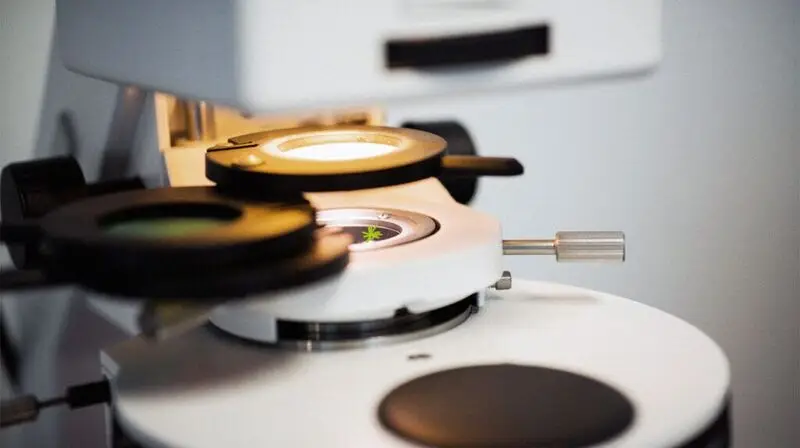
- With an aging population worldwide, neurodegenerative diseases, such as dementia, are an increasing problem.
- Although there are treatments for neurodegenerative diseases, these generally alleviate symptoms, rather than changing the course of the disease.
- Now, research has found that a protein that regulates cell repair could be a promising new target for treating several of these conditions, including the most common, Alzheimer’s disease.
In the United States, an estimated 6.9 million people aged 65 and over are living with Alzheimer’s disease, and around a million have Parkinson’s. ALS is less common; the CDC estimates that around
Current treatments can alleviate symptoms and some slow the progression of the diseases, but no cures are yet available. New monoclonal antibody treatments for Alzheimer’s have shown some potential for modifying the course of the disease, but many experts are concerned about side effects.
In the search for new therapies, research from Penn State University has identified a group of proteins that could be a target for new treatments for Alzheimer’s and other neurodegenerative disorders.
The researchers, who have a patent related to this work, found that reducing the function of heparan-sulfate-modified proteoglycans (HSPGs) helped reverse cell damage from neurodegenerative diseases.
Their study is published in
“This is interesting research which shows how cells might be protected from the effects of genetic mutations that cause Alzheimer’s disease. However, as it has only been shown in fruit flies and human cells from outside of the brain, it’s hard to say just how relevant the findings are at the moment. We’re excited to see the next stage of this research, to see if similar effects can be seen in human brain cells.”
— Katherine Gray, Alzheimer’s Society’s head of research
HSPGs, which are found on the surface of cells and in the extracellular matrix, regulate cell repair and enhance cell growth-signaling systems. The
Research leader Scott Selleck, professor of biochemistry and molecular biology at the Penn State Eberly College of Science, said in a press release:
“In the early stages of several neurodegenerative diseases, autophagy is compromised, which means cells have a reduced repair capacity.”
“In this study, we determined that heparan sulfate-modified proteins suppress autophagy-dependent cell repair. What’s more, we show that by compromising the structure and function of the sugar modifications of these proteins, the levels of autophagy increase so cells can take care of damage.
— Scott Selleck, research leader
Studies have noted heparan sulfate abnormalities in Alzheimer’s disease, but their specific role in the development of the disorder has not yet been uncovered.
By carrying out analyses on human cell lines and mouse brain cells that express aspects of Alzheimer’s, researchers in this study first showed that HSPGs regulate cell processes that are affected in several neurodegenerative diseases.
They then reduced the function of the HSPGs in these cells and found that two changes that happen early in the course of neurodegenerative diseases were reversed. The function of the mitochondria — which provide energy for the cell — was improved, and that lipid (fat) buildup in the cells was reduced.
To verify their findings, the researchers used an animal model of Alzheimer’s. They used fruit flies that had been modified to have deficits in presenilin protein, which mimics the effect of a mutation in the
Selleck explained that
In the fruit flies, the researchers reduced the functioning of HSPGs, which suppressed the death of nerve cells and corrected other cell defects.
They suggest that disrupting the structure of heparan sulfate modifications blocks or reverses early cellular problems in these models of Alzheimer’s.
Selleck highlighted the potential of the team’s findings:
“There is a critical need to focus on cellular changes that occur at the earliest times in disease progression and develop treatments that block or reverse them,” he said in a press release.
“We demonstrate that reduced autophagy, mitochondrial defects and lipid build-up — all common changes in neurodegenerative disease — can be blocked by altering one class of proteins, those with heparan sulfate modifications. We think these molecules are promising targets for drug development,” he added.
Courtney Kloske, Ph.D., Alzheimer’s Association director of scientific engagement, welcomed the findings but emphasized that further research was needed:
“This interesting but very preliminary study is based on research in a fruit fly model of Alzheimer’s. While animal models of the disease are somewhat similar to how Alzheimer’s progresses in humans, they do not replicate the disease in humans exactly.”
“Models are important in helping us understand the basic biology of the disease, but we need human studies in representative populations for ideas to be fully validated. Therefore, more research is needed to understand the possible role of heparan sulfate-modified proteins in Alzheimer’s as studied in this manuscript” she told Medical News Today.





